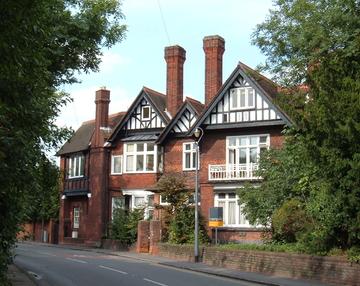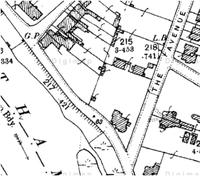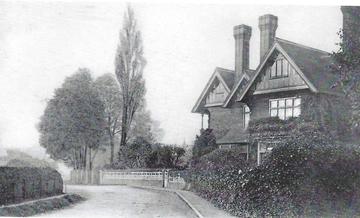
Leyfield (now known as Swan Court), as it is today
Leyfield is an imposing late Victorian mock timber-framed building which overlooks the River Thames at Datchet, Berkshire. It was built in 1879 for Benjamin Elkin Mocatta (1840-1914), head of a family of gold bullion merchants and bankers, a business going back to the seventeenth century. The family were exceedingly influential in both the business and philanthropic world. They were concerned that both Jewish and non-Jewish charities alike should encourage the independence of the poor. Although most of their philanthropy was in housing, many London hospitals and the RSPCA were among the beneficiaries of their philanthropy.
The Mocatta family were also partially responsible for the foundation and building of the West London Synagogue in 1840. This was situated a few yards from their London home at Great Cumberland Place. Frederick David Mocatta became Chairman of the synagogue between 1896-1904.
Researching this property on behalf of the local council, I met with a descendant of Benjamin Elkin, who told me a little about Leyfield, the family home at Datchet, which he had gleaned from his family. He said that the house was ‘not specifically grand but acted as the family’s country Thameside country retreat’. It was ‘a place which was primarily visited on Sundays’. Data from censuses for the period of occupation would suggest that Benjamin and his wife Marian used the house occasionally as census data shows them at the time of the census to be at their London residence rather than at Datchet. The census shows that only one of their four children was born there.
Leyfield originally stood on a very large plot of land which had been placed so it could be seen to its greatest advantage on the bend approaching the river and village. Its architect is unknown, but after if had been constructed it represented the very best in modernity that Datchet could boast, with its fine terracotta wall tiles, decorative and distinct chimneys. There was no real comparison with other homes which started to spring up on newly constructed roads and avenues from the 1880s onwards. The house exuded the wealth style and confidence of a family of the highest status and which could not be found anywhere else in the village or in the surrounding area.

Ordnance Survey map 1890 showing the location of Leyfield adjacent to the River Thames

View of Leyfield in 1905
Benjamin Mocatta owned Leyfield until his death in 1914 and his wife Marian occupied the house until her death in 1922. During the First World War she was responsible for paying for the boardroom of the King Edward VII Hospital in Windsor to be transformed into a recreation and dining room for convalescing soldiers and for the provision of furniture. The house remained with the Mocatta family until mid-1920s. With the age of modernity approaching, very large family homes were no longer needed; the house was sold in around 1930 and was converted into five flats. Very little of the exterior of the building was changed with the remodelling of the house into flats, with the exception of a second front door. The garden of the house was kept but portions of this were sold off from the 1980s onwards. The association of the house with the Mocatta family has been even more eroded with the change of name of the house from Leyfield to Swan Court.
Elias Kupfermann